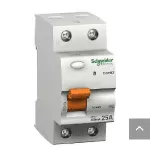Multymeter.com – The colour standards for electrical installation cables in the United States are regulated by the National Electrical Code (NEC). NEC defines wire colours for each function as follows:
• Phase wire (hot wire): red, black or blue.
• Neutral wire (neutral wire): white or grey.
• Ground wire (earth wire): green or green-yellow.
This wire colour is used to facilitate the installation and maintenance of electrical installations. By knowing the colour of the wires, electricians can quickly and easily identify the function of each wire.
The following is a more detailed explanation of each wire colour:
• Phase wires carry electrical current from the source to the load. Phase wires can be any colour, but the most common colours are red, black or blue.
• The neutral wire carries the electric current back to the source. The neutral wire is usually white or grey.
• The earth wire connects the electrical installation to earth. The earth wire is usually green or green-yellow.
In more complex electrical installations there may be more than three wires. In this case, the phase wires may have different colours, but the neutral and earth wires remain the same colour.
The following is an example of the use of wire colours in electrical installations in the United States:
A single switch usually has two wires, namely a phase wire and a neutral wire. The phase wire is usually red and the neutral wire is usually white.
The plug usually has three wires, namely the phase wire, the neutral wire and the earth wire. The phase wire is usually red, the neutral wire is usually white and the earth wire is usually green-yellow.
Note that the colour standards for electrical wiring in the United States may vary depending on the particular state or region.
Standard U.S. electrical installation wire sizes are regulated by the National Electrical Code (NEC). NEC defines wire sizes based on the diameter of the conductor wire, using the American Wire Gauge (AWG) sizing system.
Larger wire sizes have a larger wire diameter, which means they have a larger cross-sectional area. The cross-sectional area of the wire determines the current capacity that the wire can pass.
The following is a table of standard U.S. electrical installation wire sizes:
| Size AWG | Wire Diameter (mm) | Cross sectional area (mm^2) | Maximum Current (A) |
|---|---|---|---|
| 10 | 2,54 | 0,518 | 4,0 |
| 8 | 2,34 | 0,808 | 6,0 |
| 6 | 1,62 | 1,310 | 10,0 |
| 4 | 1,29 | 2,083 | 15,0 |
| 2 | 0,81 | 3,310 | 20,0 |
| 1 | 0,64 | 4,120 | 25,0 |
| 0 | 0,50 | 5,260 | 30,0 |
| 00 | 0,40 | 6,370 | 35,0 |
| 000 | 0,32 | 8,370 | 40,0 |
In domestic electrical installations, the most commonly used wire sizes are 12 AWG and 14 AWG. The 12 AWG wire is used for loads requiring a current of up to 20 A, while the 14 AWG wire is used for loads requiring a current of up to 15 A.
For loads requiring a higher current, such as an electric furnace or AC, a larger wire size, such as 10 AWG or 8 AWG, is required.
Remember that the wire size used must be appropriate for the current capacity required by the load. If the wire size is too small, the wire may become hot and catch fire.***
Source:Bard Google


